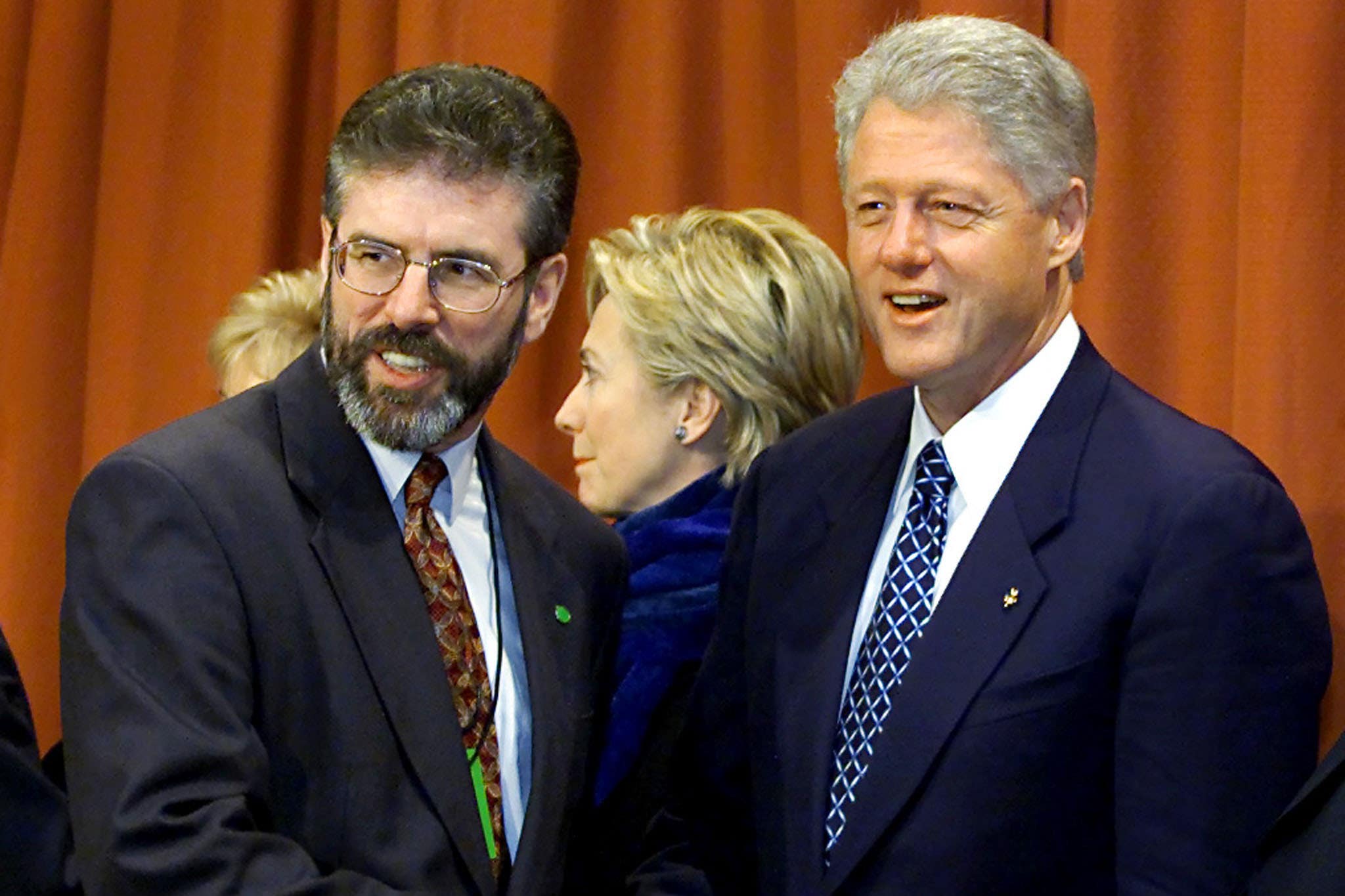Clinton and Adams had ‘circular’ decommissioning row in White House
Despite the encounter being painted as a positive for Sinn Fein at the time, a disagreement ensued about disabling arsenal in Northern Ireland.

Your support helps us to tell the story
From reproductive rights to climate change to Big Tech, The Independent is on the ground when the story is developing. Whether it's investigating the financials of Elon Musk's pro-Trump PAC or producing our latest documentary, 'The A Word', which shines a light on the American women fighting for reproductive rights, we know how important it is to parse out the facts from the messaging.
At such a critical moment in US history, we need reporters on the ground. Your donation allows us to keep sending journalists to speak to both sides of the story.
The Independent is trusted by Americans across the entire political spectrum. And unlike many other quality news outlets, we choose not to lock Americans out of our reporting and analysis with paywalls. We believe quality journalism should be available to everyone, paid for by those who can afford it.
Your support makes all the difference.Bill Clinton and Gerry Adams had a “circular” row at a high-profile meeting at the White House in 2000 over decommissioning, archive records show.
The meeting was held almost two years after the Good Friday Agreement was struck, when intense diplomatic efforts were ongoing to disable paramilitary arsenal and make changes to the police force in Northern Ireland.
Although Mr Adams’ encounter with the US President was seen as a positive step for Sinn Fein, newly-released archive files show there was a lengthy discussion over the pace of IRA decommissioning efforts.
In a readout note of the White House meeting held on January 12 at 2.30pm, stamped as “seen by the Taoiseach”, it details Mr Adams’ “upbeat” mood before meeting Mr Clinton and a request for discretion on the level of US involvement.
The note states that Sinn Fein’s Rita O’Hare and Richard McAuley accompanied Mr Adams.
A 30-minute meeting was first held with national security adviser Sandy Berger and deputy national security adviser Jim Steinberg to prepare for the meeting with the US President.
The readout stated that as Mr Berger was called out of the meeting several times, “this did not help the flow of exchanges”.
It said that Mr Adams was “fairly upbeat about the ‘real political progress’ that had been made in the past months”.
The note also stated the discussion that followed between Mr Clinton and Mr Adams was one of “circular argumentation”, where Mr Adams “insisted that decommissioning could not happen under pressure of a deadline and the President kept making the point that something had to happen to enable the present difficulty to be overcome”.
Mr Adams also asked Mr Clinton if he was willing to put pressure on the British, to which Mr Clinton said he had made the point to UK prime minister Tony Blair that “some movement on demilitarisation and related issues … would be helpful”.
US Secretary of State Madeleine Albright was also at the meeting, the note added.
The “upshot” of the meeting was that Mr Steinberg would “stay in touch” with Mr Adams “in the coming days” to see what could be done to make progress.
It was also conveyed that the White House maintained a “minimalist line” to the press.
The US did not want it known that “the total time given to Adams was about an hour and a half” nor that Mr Steinberg was to be “actively involved over the next while”.
“They feel that any knowledge or speculation about moves behind the scenes would not be helpful and Dick Norland appealed to us to maintain this confidentiality,” the note said.
The material can be viewed in the National Archives in file 2023/154/6.